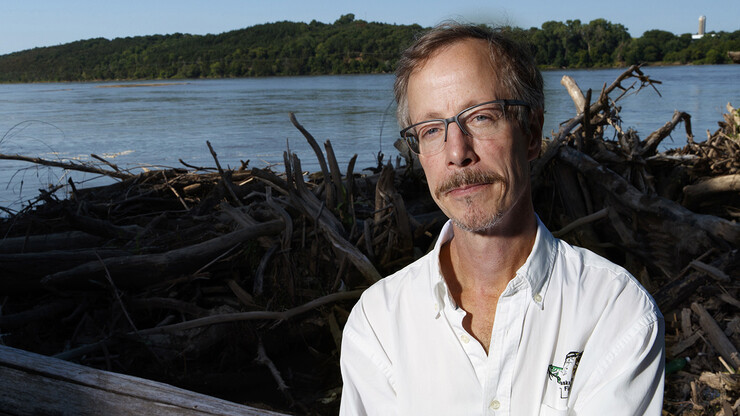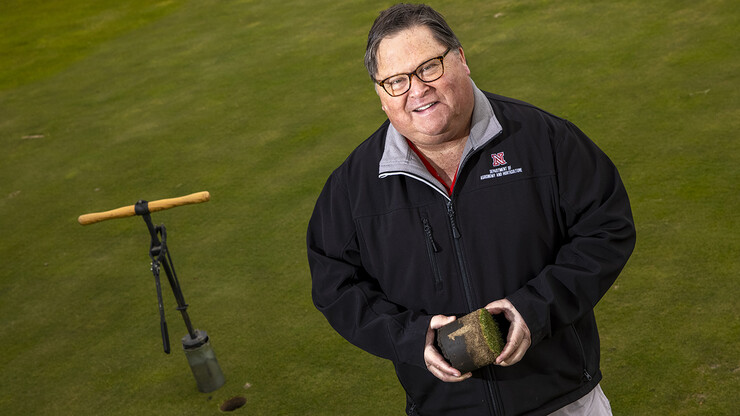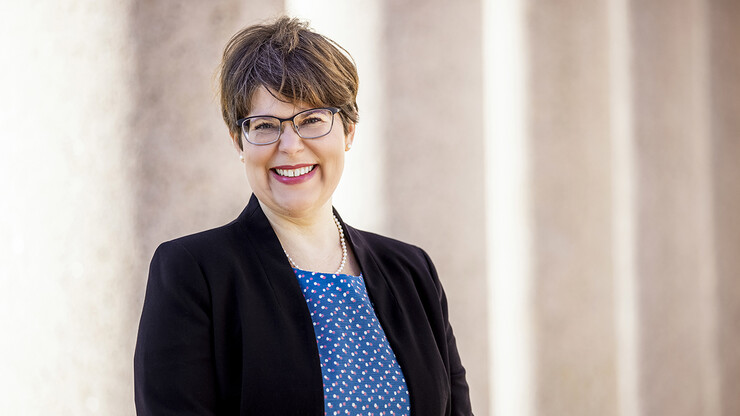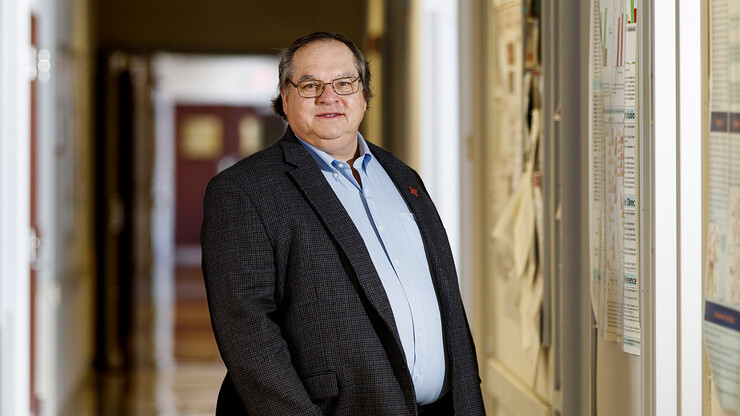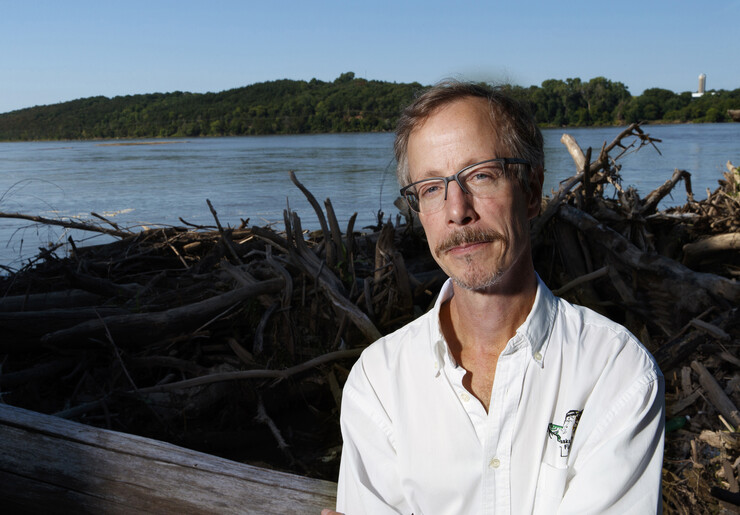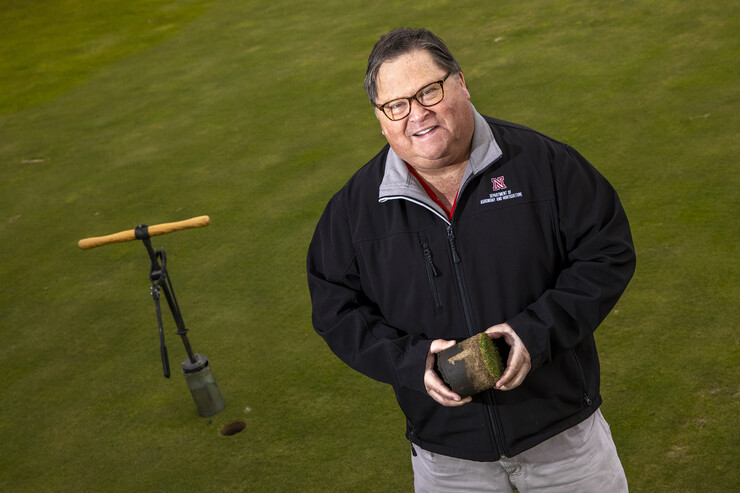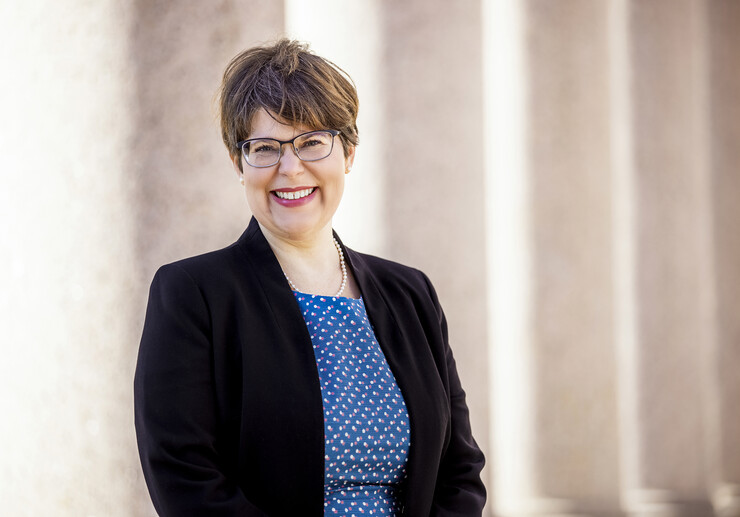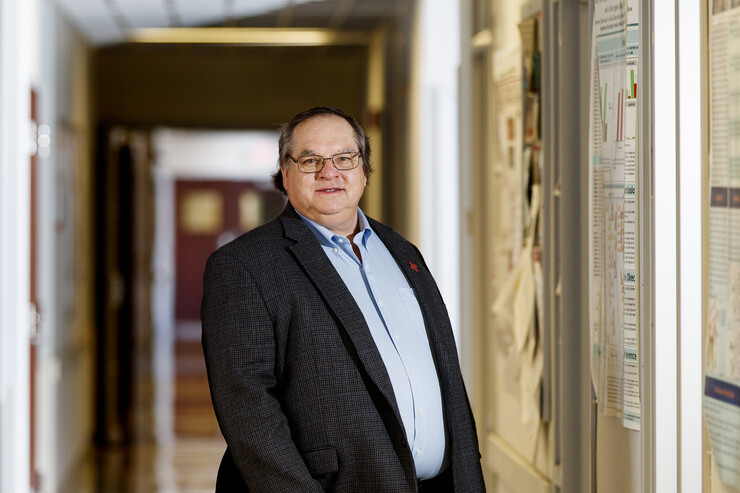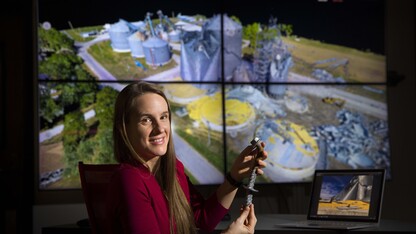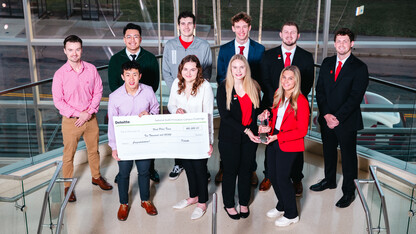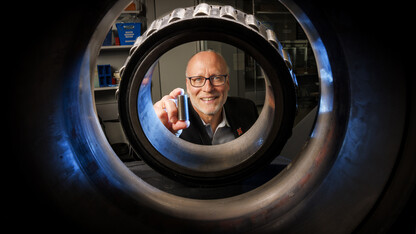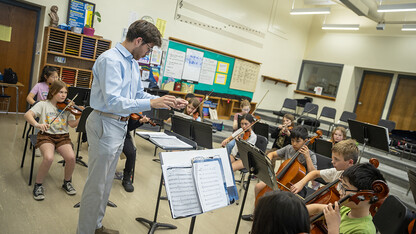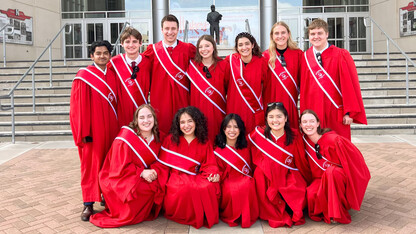· 8 min read
Allen, Gaussoin, Olson, Takacs named AAAS fellows
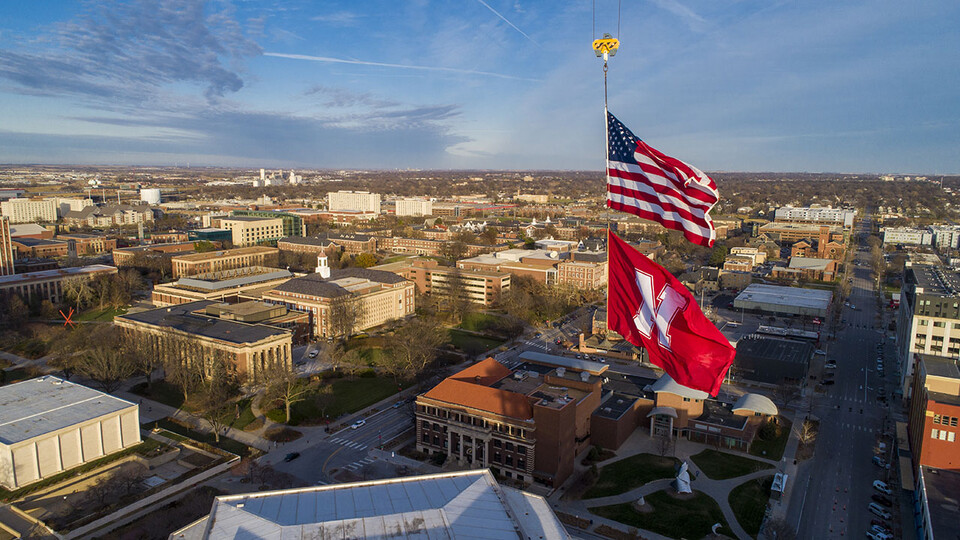
Four University of Nebraska–Lincoln faculty members have been named fellows of the American Association for the Advancement of Science, the world’s largest general scientific society. Fellows are selected by their peers for scientifically or socially distinguished achievements that advance science or its application.
Nebraska’s new AAAS fellows are:
Craig Allen, professor of natural resources, for distinguished contributions to resilience theory and its application to conservation and resource management, as well as the advancement of science through teaching and service.
Roch Gaussoin, professor of agronomy and horticulture, for distinguished contributions and service to the agronomic sciences, particularly in turfgrass and landscape systems, academic administration and communicating science to the public.
Kristen Olson, Leland J. and Dorothy H. Olson Professor of sociology, for distinguished contributions to survey research methodology, particularly understanding and reducing measurement and survey nonresponse errors, along with service to the field and commitment to mentoring students.
James Takacs, Charles J. Mach University Professor of chemistry, for distinguished contributions to synthetic organic chemistry, commitment to mentoring and excellence in postsecondary chemical education, and the advancement of science through academic administration.
AAAS has been electing fellows since 1874. This year’s cohort will be formally announced in the Nov. 27 issue of the journal Science, to be followed by a virtual induction ceremony on Feb. 13. Nebraska’s honorees are among 489 members who were elected fellows this year.
More on Nebraska’s new AAAS fellows:
Craig Allen
Today, scientists worldwide embrace resilience theory as a framework for addressing how systems can withstand stressors such as changing vegetation patterns, water shortages and climate variability without losing critical functions.
But it wasn’t always that way, said Allen, one of the nation’s foremost resilience researchers and a key player in putting the field on the map. To him, the AAAS honor is a reminder of the discipline’s evolution since he was a graduate student in the 1990s.
“Some of the areas were once considered obscure and esoteric,” said Allen, professor of natural resources. “But my Ph.D. adviser beat it into my head that there’s only one test that really matters: the test of time. It’s nice to have decades of work validated.”
Allen is best known for investigating how biological diversity affects resilience in complex systems and how landscape changes impact native animal populations and diversity. He’s a leader in panarchy theory, a social-ecological approach focused on scale-specific distribution of system functions.
More recently, Allen has focused on applying resilience theory to on-the-ground challenges. With Department of Defense funding, he and colleagues are developing an early warning system that would enable decision-makers to prepare for disruptive ecological shifts.
Allen has contributed to more than 200 publications, including five books, which have been cited more than 10,000 times. He’s secured over $20 million in external funding from agencies including the National Science Foundation, Department of Defense and U.S. Geological Survey.
Allen is a dedicated mentor. He leads an NSF Research Traineeship program focused on agricultural landscape resilience and previously co-directed an NSF-funded training initiative on adaptive ecosystem management. He founded the Nebraska Cooperative Fish and Wildlife Research Unit, through which he mentored more than 50 students.
He’s served on advisory boards and committees regionally, nationally and internationally, including for The Nature Conservancy and the Resilience Alliance, an international group dedicated to sustainability.
At Nebraska, Allen is launching the Center for Resilience in Working Agricultural Landscapes, which will focus on agricultural resilience and agro-ecosystem management.
Roch Gaussoin
Since 1991, Gaussoin has been helping people in Nebraska and beyond understand how plant physiology concepts can help them take better care of their grass.
Gaussoin is an expert science communicator, having delivered more than 350 presentations and 100 publications to the turfgrass and golf course industry during his career. He’s a key contributor to “Backyard Farmer,” an educational TV program produced by NET and Nebraska Extension.
“I never underestimate the capacity of anyone I talk to, whether it’s a custodian taking care of the high school football field or a veteran golf course superintendent,” said Gaussoin, professor of agronomy and horticulture. “You have to deliver the information in a way they can understand and apply — or else you, the scientist, failed.”
He’s also reached the highest levels of administration and professional service. From 2011 to 2017, he led Nebraska’s Department of Agronomy and Horticulture, the university’s largest department. He hired 21 faculty members, launching the unit to a top-three ranking for departmental funding and expenditures between 2014 and 2016, including a first-place rank in 2015.
Gaussoin was elected president of the Crop Science Society of America in 2015 and appointed to the National Agricultural Research, Extension, Education and Economics Advisory Board by the U.S. secretary of agriculture in 2016.
He’s published 105 refereed papers, patented four buffalograss cultivars and developed a groundbreaking approach to improving the agronomic quality of golf greens. The strategy initially ran contrary to decades of practice but is widely used today to reduce labor and fossil fuel consumption.
Gaussoin said he’s proud to represent an applied discipline such as turfgrass science in the AAAS fellowship.
“Recognitions like the prestigious AAAS Fellow are significant and the icing on the cake when you set your sights on doing fun stuff, delivering good science and helping people,” Gaussoin said. “I sincerely appreciate the family, friends, students and colleagues who made it happen.”
Kristen Olson
Olson is one of the nation’s leading researchers in survey methodology, an interdisciplinary field focused on collecting high-quality data and ensuring it accurately represents a population. She analyzes surveys — how they’re written and administered, and who responds to them — with the goal of improving the data collected.
“I look at where in the data collection process things go wrong, and what we can do to fix it,” said Olson, Leland J. and Dorothy H. Olson Professor of sociology. “If we’re going to make high-quality public policy recommendations based on surveys, we need high-quality data.”
She’s done groundbreaking work to discern how interviewers’ behavior — how fast they ask questions and which words they emphasize, for example — affects survey data. Her work has spurred other researchers to explore these phenomena and implement correctives.
Olson is also on the forefront of adapting survey science to a climate of changing technology and survey delivery methods, including a rise in mixed-mode and self-administered surveys distributed through the mail, internet and mobile devices.
Her research has had national impact. Olson’s 70 journal articles and books have been cited more than 2,000 times, and she’s delivered about 100 conference presentations. As principal investigator, she’s received almost $4.5 million from the National Institutes of Health, National Science Foundation and U.S. Department of Agriculture, including a nearly $3 million NSF-Census Research Network grant.
Olson was elected program chair for the 2021 conference of the American Association for Public Opinion Research and has served multiple organizations in various leadership capacities. She’s the current editor-in-chief of the Journal of Survey Statistics and Methodology and has been associate editor of six journals, including the prestigious Public Opinion Quarterly. She routinely serves on national advisory boards and committees.
Olson said her greatest professional contribution is preparing the next generation of survey scientists, who have few opportunities for graduate-level training. To date, she’s mentored more than 60 students who are now working in government, private industry and beyond.
James Takacs
For more than 30 years, Takacs has pioneered new approaches in asymmetric catalysis, a branch of synthetic organic chemistry focused on how molecules with different chirality, or “handedness,” interact. Just as people have a right hand that mirrors their left one, most molecules have a left- and right-handed form that dictates their properties. Takacs develops “handed” catalysts to produce chiral molecules with useful characteristics, which are used in materials, high-tech applications and, most often, pharmaceuticals.
“At the end of the day, someone has to know how to assemble structures with good medicinal properties and put those in the bottle,” said Takacs, Charles J. Mach University Professor of chemistry.
His most significant contribution is one that could substantially impact the pharmaceutical industry. One way to control chirality is to add hydrogen to unsaturated molecules, a reaction that typically requires hazardously high pressures and temperatures. Takacs’ group recently uncovered a rhodium-based catalyst that functions under low-risk conditions, paving the way for faster and safer hydrogenation.
Since launching his independent research career in the 1980s, Takacs has received continuous funding from the National Institutes of Health, National Science Foundation and Department of Defense. His publications have been cited more than 4,700 times, and he’s presented at more than 100 conferences worldwide.
In 2016, he became director of the Nebraska Center for Integrated Biomolecular Communication, an NIH Center for Biomedical Research Excellence focused on cell communication and metabolic and regulatory pathways that impact disease.
Takacs has trained more than 75 students and postdocs who are now thriving in academia, industry and government. From 2007 to 2013, he chaired Nebraska’s Department of Chemistry, hiring seven tenure-track faculty and spearheading more than $11 million of facility renovations. He’s served the American Chemical Society locally and regionally and has participated in more than 35 NIH review panels.
“I’ve been fortunate to use my academic experience to ask questions that I really wanted to know the answers to,” he said. “That’s what gets me up in the morning.”
